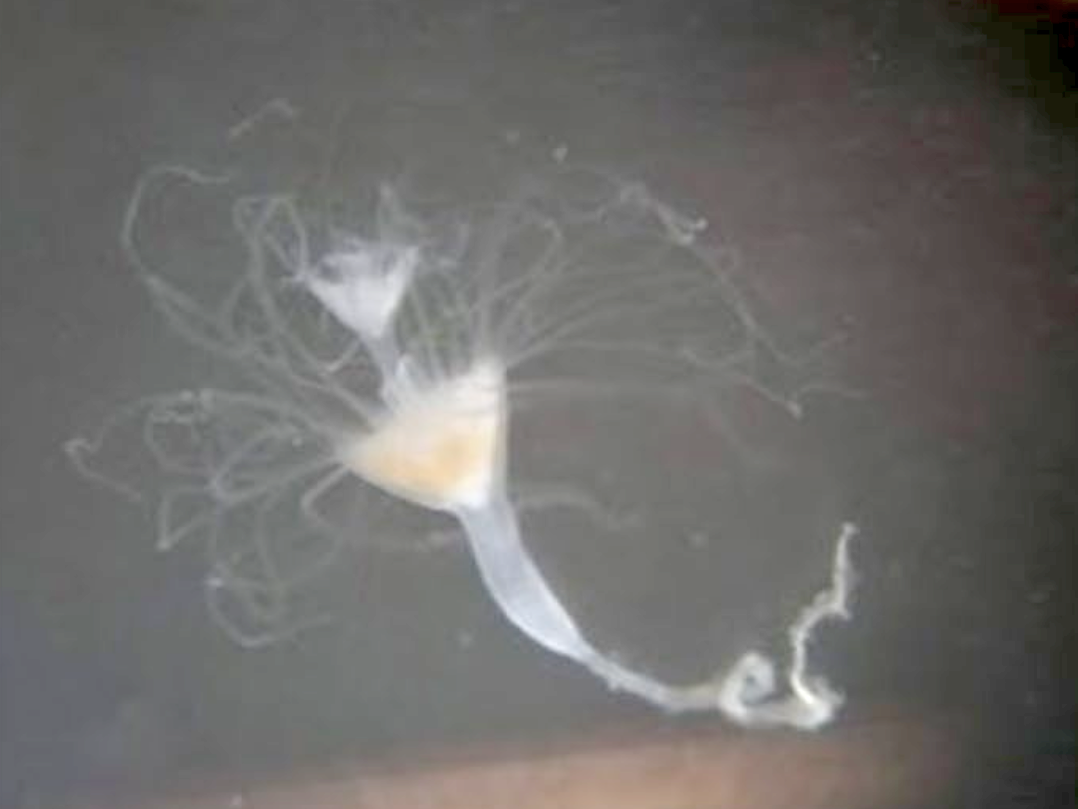One of the best-known beneficial symbioses in the ocean is the mutualism between corals and photosynthetic algae. Coral polyps provide shelter and nutrients for algae cells, and the algae generate sugar to fuel their hosts. A new study by CSUN Master’s alumna Jennica Moffat shows that the algae may also help their hosts withstand heat stress — if it’s the right combination of host and algae.
Moffat and her advisor Casey terHorst, working with marine biologists Mary Alice Coffroth and Piper Wallingford, tested the algae-host association with polyps of the jellyfish Cassiopea xamachana. Although it’s not a reef-building coral, C. xamachana is closely related to corals, and forms a very similar symbiosis with the same kind of algae. Conveniently, C. xamachana can reproduce clonally, so it’s possible to test the same genetic line in different experimental conditions.
Moffat inoculated cloned C. xamachana polyps with five different strains of symbiotic algae, and grew the resulting “holobionts” at 26°C (79°F), 30°C (86°F), or 32°C (90°F), and monitored the symbionts’ metabolic activity as well as their hosts’ growth and health. The five genotypes differed, in some cases dramatically, in their responses to increasing temperature — and their hosts did as well. However, symbiont strains that showed better metabolic performance at high temperature did not necessarily provide more help to their hosts.
Moffat and her coauthors argue that these results show that symbiotic algae may provide a way for the host-symbiont pair to adapt to higher temperatures, even if the specific pairing of host and symbiont doesn’t always work out in the host’s favor. Variation is critical for natural selection to act, and climate change has meant that corals and their algal partners face warming oceans across the world — so the genetic variation Moffat and her collaborators documented may make the difference between corals adapting, or dying out.
Image: A polyp of C. xamachana inoculated with symbiotic algae, from Figure 1 of et al. 2022.

